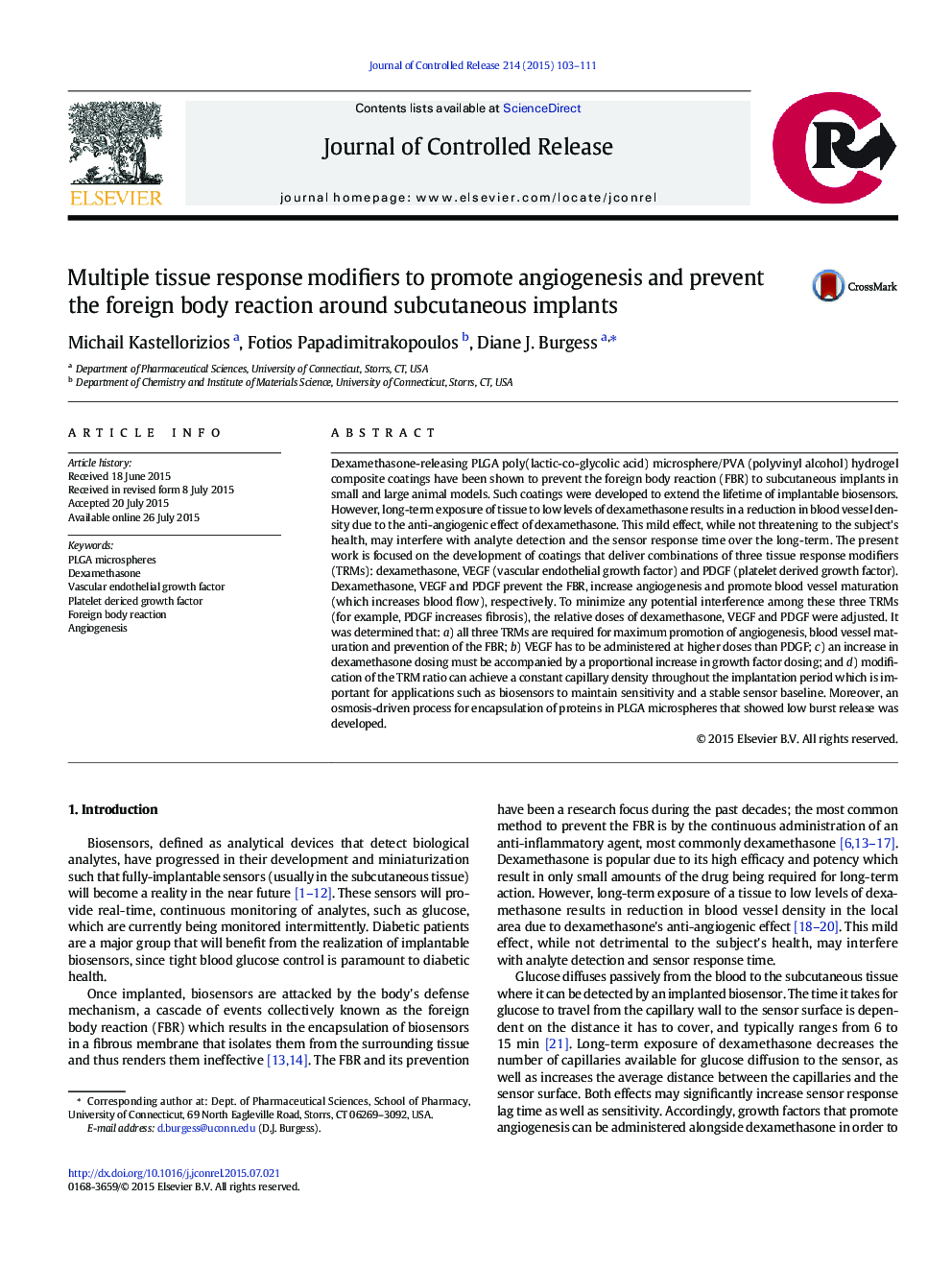| کد مقاله | کد نشریه | سال انتشار | مقاله انگلیسی | نسخه تمام متن |
|---|---|---|---|---|
| 1423661 | 1509035 | 2015 | 9 صفحه PDF | دانلود رایگان |
Dexamethasone-releasing PLGA poly(lactic-co-glycolic acid) microsphere/PVA (polyvinyl alcohol) hydrogel composite coatings have been shown to prevent the foreign body reaction (FBR) to subcutaneous implants in small and large animal models. Such coatings were developed to extend the lifetime of implantable biosensors. However, long-term exposure of tissue to low levels of dexamethasone results in a reduction in blood vessel density due to the anti-angiogenic effect of dexamethasone. This mild effect, while not threatening to the subject's health, may interfere with analyte detection and the sensor response time over the long-term. The present work is focused on the development of coatings that deliver combinations of three tissue response modifiers (TRMs): dexamethasone, VEGF (vascular endothelial growth factor) and PDGF (platelet derived growth factor). Dexamethasone, VEGF and PDGF prevent the FBR, increase angiogenesis and promote blood vessel maturation (which increases blood flow), respectively. To minimize any potential interference among these three TRMs (for example, PDGF increases fibrosis), the relative doses of dexamethasone, VEGF and PDGF were adjusted. It was determined that: a) all three TRMs are required for maximum promotion of angiogenesis, blood vessel maturation and prevention of the FBR; b) VEGF has to be administered at higher doses than PDGF; c) an increase in dexamethasone dosing must be accompanied by a proportional increase in growth factor dosing; and d) modification of the TRM ratio can achieve a constant capillary density throughout the implantation period which is important for applications such as biosensors to maintain sensitivity and a stable sensor baseline. Moreover, an osmosis-driven process for encapsulation of proteins in PLGA microspheres that showed low burst release was developed.
Figure optionsDownload high-quality image (223 K)Download as PowerPoint slide
Journal: Journal of Controlled Release - Volume 214, 28 September 2015, Pages 103–111
